Vaka Motu - work boat and beauty queen in one
Pacific Voyagers Charitable Trust is an NGO that builds sailing vessels that only an NGO could build. Neither the market driven yachting industry or corporate sponsored racing could even conceive of boats as cool as these, let alone build a fleet! This is Rangi, the second of the Vaka Motu line of inter-island cargo, passenger, and fishing double canoes. Intended not as a reproduction of prior art, the Vaka Motu imagine the future. The hulls are quite “modern” in the basics of freeboard, L/B ratio, and plan form, yet exude an ancient Pacific genetic visual code from every angle. They are gorgeous, and my hat is off to the designers, who are unnamed on the website. The boat harks back to the day when working cargo craft were both beautiful and functional, something that has been rather lost or ignored in modern ship design.
The main impetus behind the Vaka Motu was to develop a typical working boat for the Pacific that can be built and operated by the islanders themselves. The typical distance for inter-island traffic is 50 to 100 nm, but the vessel is also capable of long open ocean crossings. It can be used for many purposes, i.e. to bring goods from remote outer islands to the central markets, for coastal fishing operations, for noise-free whale watching and sightseeing tours for tourists and it could even operate as a floating school bus. It provides an economic and environment-friendly transportation system for people and products on the islands while fostering cultural revival, educational opportunities and community empowerment.
The Vaka Motu requires no use of fossil energy as it is purely wind and solar powered. Just like the Vaka Moana, the Vaka Motu is based on the traditional double-hulled polynesian sailing canoe design. However, in contrast to traditional vaka their hulls are made of E-Glass and Epoxy Resin. The fibreglass production is simple and can be handed over easily to local craftsmen after adequate training as the construction of the hulls is done with a mould that is easily transportable in small containers. Its shallow 0.8m draft makes it possible to sail across shallow lagoons and to easily land on beaches. It is steered by a traditional wood steering paddle (hoi). Like the Vaka Moana, our Vaka Motu have a multi-purpose boom that can be used as a crane to assist loading and unloading of cargo, and all beams are connected to the hulls through traditional lashings.
Of course, I can’t help but think this catamaran would also make a fine cruising boat.
Thanks to Paul C. for the submission. Do you have something interesting for the Proa File? Send it in!
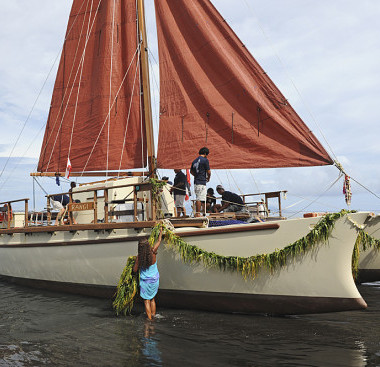
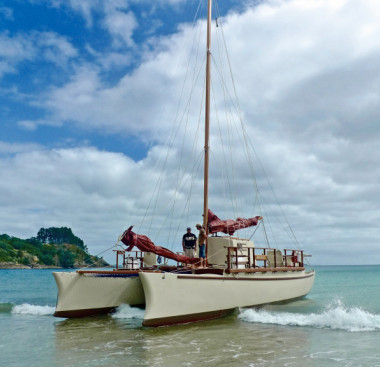
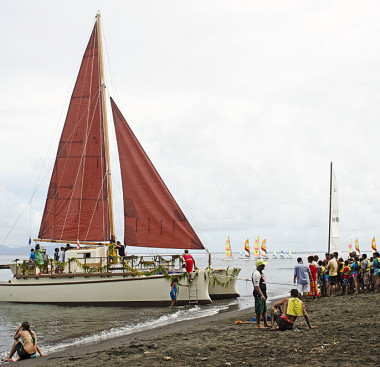
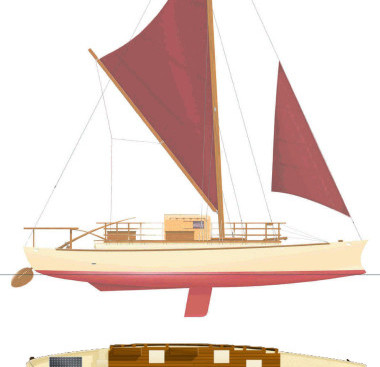
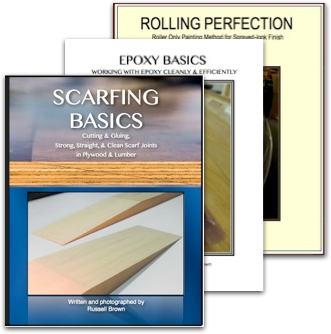
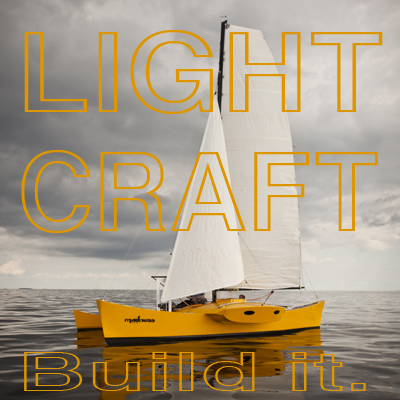
Boy do I like this! Sustainable boat that promotes sustainable actions. I can imagine that with many of these islands’ lack of roads, a ferry service that shuttles to stops around each island would be valuable as well. Excellent post.